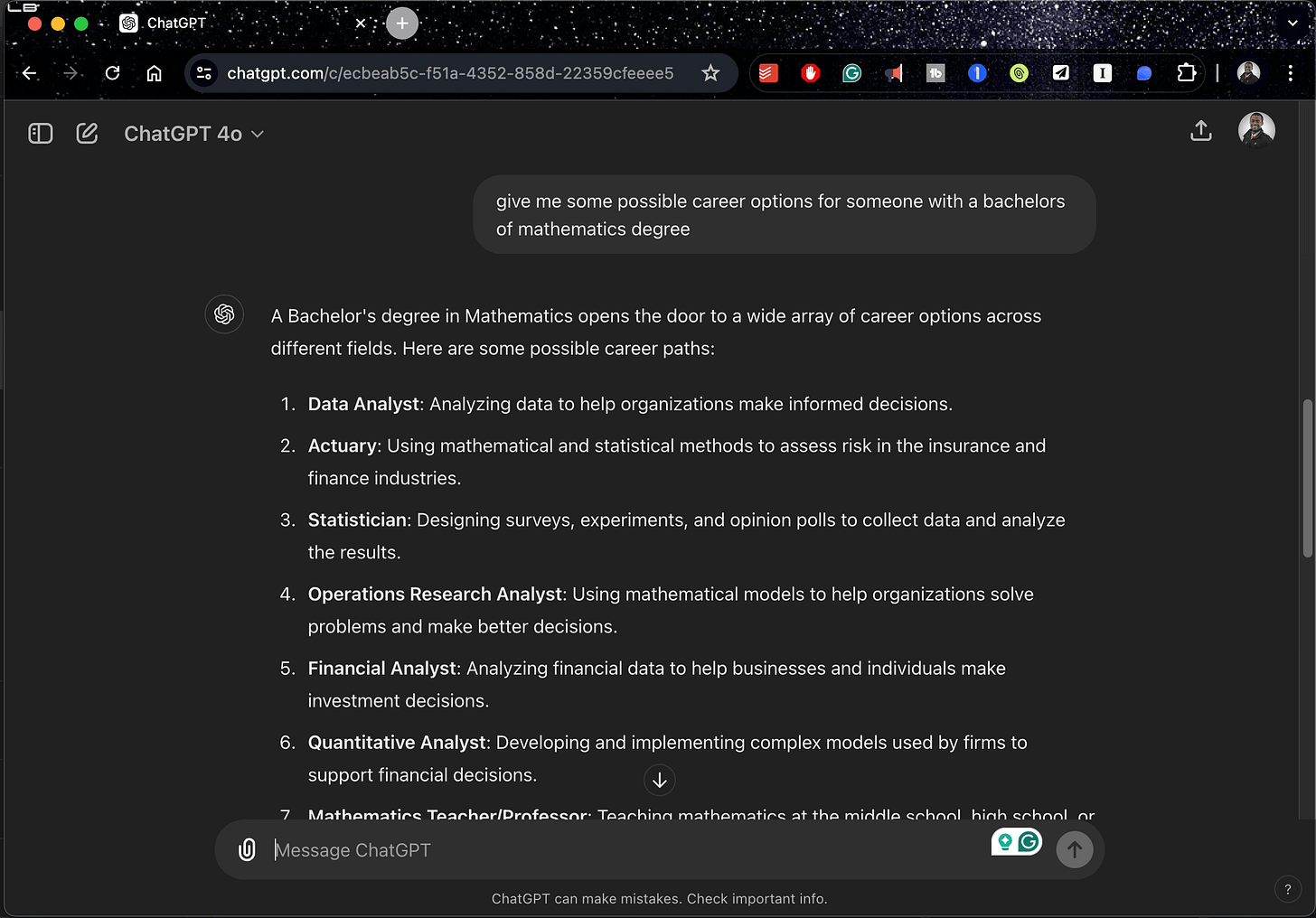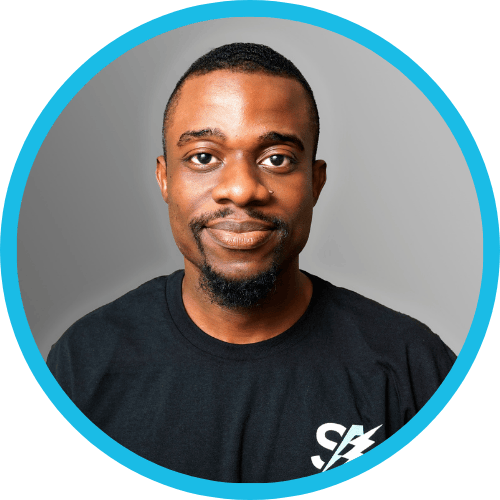
A small announcement before we start.
By popular request, the first Scholarship Accelerator Bootcamp starts April 5th.
This 6-week Bootcamp is designed to help you secure fully funded scholarships (Graduate Assistantships) by submitting 5 high-quality applications in just 6 weeks—with expert guidance every step of the way.
By the end of the program, you’ll:
Find the right schools that actually offer funding in Spring 2026 (no more applying blindly!)
Craft a powerful SOP, CV, and recommendation letter strategy that stands out.
Have all your application documents personally reviewed by me to ensure they are strong and competitive.
Learn how to contact professors & departments the right way to increase your chances of securing a GA.
Apply alongside a supportive community of students, keeping you accountable and making the process easier.
Submit applications with full confidence, knowing your profile is strong enough to win funding.
This proven system is designed to help you finally secure funding and move to the US by January 2026.
Enroll now before the April 5th cohort starts!
In October 2018, I got my first scholarship at East Tennessee State University. It was a full tuition waiver and a $4,000 stipend per semester for a master's in mathematics.
I lost the admission and scholarship because of my visa denials. So I had to apply again.
In July 2020, I got my second scholarship for a different course. A master's in applied statistics at Bowling Green State University. It was also a tuition waiver and a $5,000 stipend per semester.
I got great scholarships for two different courses.
But if I had chosen a Master's in Fine Arts, I'm sure I'd still be in Nigeria now.
I'm happy I didn't go with the first admission. I wanted to leave Mathematics to build a more practical (not theoretical) career. The master's in applied statistics did that for me.
Your Course Determines Your Scholarship
To get a US scholarship, you first need to make sure you don’t make a few of the most common mistakes:
Not selecting one course: Applying to many courses doesn't give you more options. It makes you submit weak applications because you have to write a strong SOP for each course. You also need at least 3 current students to review each SOP for you. That's making the process more stressful than it already is.
Selecting a course without research: Some applicants just pick the course they studied in their bachelor's. This works for some people. But if you didn't like the course in the first place, you need to do some research.
Selecting a course you can't build a future with: It's far better to select a STEM course than a non-STEM course. STEM stands for Science, Technology, Engineering and Mathematics. STEM graduates can work in the US for at least 3 years after their studies. Non-STEM can only work for 1 year, and then they have to get another degree to stay longer. This advice might not apply to everyone.
People tend to make these mistakes because they want to apply for scholarships and hope for the best. As a result, they waste time and money applying without getting results.
So, here’s how to fix it in 5 steps:
(Have a separate document open, or just get paper and pen for this exercise)
Step 1: What's Your Academic Background?
The very first step is to list out what you already have a degree in, like your Bachelors and Master's (if you have one)
If you did well here and you love the course, it's already a great foundation for you to get scholarships.
In 2020, when I was applying for a master's degree, this is what mine looked like:
Bachelor's in Mathematics (4.65/5.0)
Still, write it down if you dislike it or your CGPA isn't high.
We'll make our final pick later.
Step 2: What's Your Current Work Experience?
The next step to selecting the best course is to check your work experience.
I have met students who used their work experience to qualify for scholarships.
Your academic or work experience is a great way to show prior experience in any course you are applying for.
In 2020, I had:
Two years of teaching Mathematics to university students.
Do you enjoy the work you've been doing? Will you still want to continue building that career?
Let's keep the answers to these questions at the back of our minds as we do this exercise.
Even if you don't have any work experience, we still have 3 more steps to go.
Step 3: What Courses Did You Enjoy?
The third step is to check the courses you took during your bachelor's (and master's) that you enjoyed.
What you enjoyed doing before, you'll most likely enjoy doing it again.
If you have your transcript already, you can scan through it to remind yourself of the courses you did. Then, capture the ones you enjoyed.
For me, during my bachelor's in Maths:
Linear Algebra
Statistics
Step 4: What Are You Interested In?
The fourth step is to ask yourself, "What am I interested in?"
What do you love to do? What do you want to be in the next 5 years? What would you do if all jobs had the same pay? What gives you fulfillment? What makes you happy? (expect money. Lol)
If you need to take 15-30 minutes to journal this out, feel free to do so.
For me, it is:
I love analyzing things and applying it to solve real problems.
This is what I was doing during my bachelor's degree in mathematics. This is what I am doing with this newsletter.
What is yours?
Step 5: What Are The Possible Career Options?
The next step is to ask yourself, "What are the possible career options for my bachelor's degree?"
For this step, I'll recommend you ask ChatGPT (or any other AI tool). It gives you so many ideas of careers you never knew existed.
ChatGPT suggested:
Statistician
Data Analyst
Financial Analyst
Actuary
From my knowledge, I'll add:
Mathematics Teacher
Data Scientist
Write down all that you like from the suggestions ChatGPT gives you.
Putting It All Together:
And finally, it is time to make a decision.
From all these responses, write out all possible options:
Mathematics, Statistics, Applied Mathematics, Applied Statistics, Data Analysis, Data Science, Actuary, etc.
These are the potential courses, but we still need to drop some.
Remove the ones you don't like and select at most 3 that you can do. If you have 1, then that's great.
Mine:
Applied Statistics
Data Science
Applied Mathematics
If you have more than one, you'll need to choose one. Because you just want to write one winning SOP for one program and not SOPs for 3 different programs. That's a bad strategy.
To reduce this to one, you can do more research.
Check if any of them is STEM. Pick the STEM course because of the reasons discussed earlier. You can check if it's STEM by doing a Google Search (Google: "Applied Statistics STEM" and see what comes up).
Watch YouTube videos on what the day in a life of each of them looks like. Do you prefer one over the other?
Is there anyone you have more experience in (Steps 1 and 2)?
After these steps, you should have the best course for you. (Mine: Applied Statistics)
That’s it!
As always, thanks for reading.
Hit reply and let me know what you found most helpful this week—I’d love to hear from you!
See you next Wednesday.
Whenever you're ready, there are 2 ways I can help you:
The Scholarship Accelerator: his 6-week Bootcamp is designed to help you secure fully funded scholarships (Graduate Assistantships) by submitting 5 high-quality applications in just 6 weeks—with expert guidance every step of the way. Enroll before the next cohort, starting April 5th.
F1 Visa Interview Consultation: Get your F1 visa in your next interview. I combine my five F1 visa interview experiences with my expertise in learning from visa officers to prepare you for your visa interview thoroughly. We will identify your strengths and prepare you to deliver them confidently. Your story is the secret to your visa approval.







Please can I change my course entirely to do a stem course for PHD